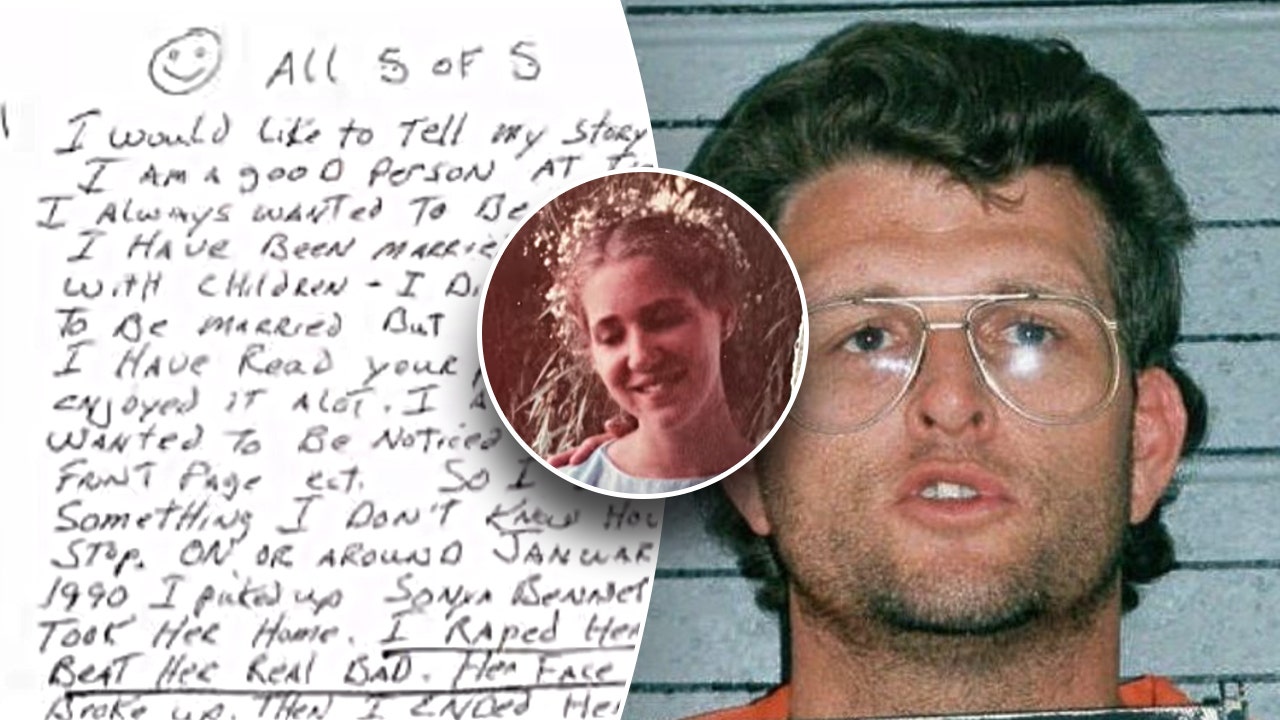Unveiling The Dark Truth: Serial Killers Photos Of Victims
When you dive into the dark corners of criminal history, one topic that sends shivers down the spine is the chilling reality of serial killers and their victims. The concept of serial killers photos of victims unveils a disturbing side of human nature that most of us would rather avoid. But understanding this dark phenomenon is crucial for anyone interested in crime, psychology, or even true crime storytelling. So, buckle up, because we’re about to explore some deeply unsettling yet fascinating truths.
Now, you might be wondering why anyone would want to delve into such a grim subject. The truth is, studying these cases helps us understand the criminal mind and improve investigative techniques. Plus, it’s kinda like watching a horror movie – you can’t look away because it’s so intriguing, even if it’s scary as heck.
Before we dive in deeper, let’s set the stage. This article isn’t just about shock value. We’re going to break down the psychology behind why serial killers take photos of their victims, the impact on society, and how these images are used in investigations. So, grab your favorite drink, and let’s uncover the dark side of crime together.
Read also:Kristen Bell Hollywoods Stylish Mom And Her Inspiring Journey
What Drives Them? The Psychology Behind Serial Killers Photos of Victims
Understanding the psychology of a serial killer is like trying to solve a complex puzzle. But one piece that often fits into this puzzle is the disturbing habit of taking photos of victims. It’s not just about capturing a moment; it’s about control, domination, and sometimes even a twisted form of art.
Experts in criminal psychology suggest that serial killers use photos as a way to relive their crimes. Think about it – they can’t go back in time, but a photo allows them to revisit the moment over and over again. It’s like having a souvenir of their darkest deeds.
Why Do They Take Photos?
So, why exactly do these individuals feel the need to document their atrocities? Well, it’s not as simple as just wanting a keepsake. Here are a few reasons:
- Control: Having a photo gives them power over their victims, even after the act is over.
- Validation: Some killers use these images to validate their actions in their own minds, reinforcing their twisted sense of self-worth.
- Artistic Expression: Believe it or not, some serial killers view their crimes as a form of dark art, and the photos are their canvas.
It’s a deeply disturbing aspect of their psychology, but understanding it can help law enforcement better predict and catch these individuals before they strike again.
The Role of Photos in Serial Killer Investigations
When it comes to solving serial killer cases, the photos they take can be a double-edged sword. On one hand, they provide invaluable evidence that can lead to arrests. On the other hand, they can also be a source of trauma for investigators and the families of victims.
Law enforcement agencies have learned to use these images to their advantage. By analyzing the photos, they can gather clues about the killer’s habits, preferences, and even potential locations. It’s like piecing together a jigsaw puzzle, but with a lot more at stake.
Read also:Glenn Close Finds Serenity And Family In Montana Exclusive Insights
How Are These Photos Used?
Here’s a quick breakdown of how investigators utilize these photos:
- Pattern Recognition: By studying the images, investigators can identify patterns in the killer’s behavior, such as the type of victim they target or the method they use.
- Location Identification: Sometimes, the background of the photos can reveal where the crimes took place, giving investigators a lead to follow.
- Forensic Analysis: Advanced technology allows experts to analyze the photos for hidden clues, like fingerprints or DNA left on the camera or storage device.
It’s a delicate balance between using the evidence effectively and respecting the dignity of the victims and their families. Investigators walk a fine line, but the results can be life-saving.
Impact on Society: The Dark Legacy of Serial Killers Photos of Victims
The existence of these photos has a profound impact on society. It’s not just about the victims and their families; it affects everyone who learns about these crimes. The media plays a significant role in shaping public perception, and the way these stories are told can either help or harm the healing process.
For families of victims, the discovery of such images can be devastating. It’s like reopening old wounds that never fully healed. But for the public, it’s a stark reminder of the darkness that exists in the world and the importance of vigilance.
How Does Society Respond?
Society’s response to these cases varies. Some people are fascinated by the macabre details, leading to a surge in true crime documentaries and podcasts. Others are repulsed and choose to distance themselves from the subject altogether. But no matter where you stand, it’s impossible to ignore the impact these crimes have on our collective psyche.
Notable Cases: Serial Killers Who Documented Their Crimes
Throughout history, there have been several infamous serial killers who took photos of their victims. These cases serve as cautionary tales and reminders of the importance of understanding this phenomenon.
The Case of Ted Bundy
Ted Bundy, one of the most notorious serial killers in American history, was known for his charm and good looks, which he used to lure his victims. While he didn’t leave behind many photos, his case highlights the importance of recognizing warning signs before it’s too late.
The Green River Killer
Gary Ridgway, also known as the Green River Killer, was responsible for the deaths of at least 49 women. He admitted to taking photos of some of his victims, using them as a way to relive his crimes. This case is a prime example of how these images can aid in investigations.
Legal and Ethical Considerations
When it comes to serial killers and their photos of victims, there are significant legal and ethical considerations. The handling of these images must be done with care to avoid causing further harm to the families involved.
Laws vary by jurisdiction, but generally, these photos are treated as evidence and are not made public. However, in some cases, they may be released to the media if it aids in the investigation. It’s a controversial practice, but one that is often necessary for justice to prevail.
What Are the Ethical Concerns?
Here are a few ethical concerns that arise when dealing with these images:
- Respect for Victims: Ensuring that the dignity of the victims is maintained is paramount.
- Impact on Families: Families of victims deserve to have their privacy respected, even in the face of such tragedy.
- Public Sensitivity: The public must be protected from unnecessary exposure to disturbing content.
It’s a delicate balance, but one that must be carefully navigated to ensure justice is served without causing further harm.
Prevention and Awareness: What Can Be Done?
While it’s impossible to completely eliminate the threat of serial killers, there are steps that can be taken to prevent these crimes and raise awareness. Education and community involvement are key components of any effective strategy.
By teaching people to recognize warning signs and encouraging them to report suspicious behavior, communities can play an active role in stopping these predators before they strike. It’s not just about catching the bad guys; it’s about creating a safer world for everyone.
How Can We Stay Safe?
Here are a few tips for staying safe in today’s world:
- Trust Your Instincts: If something feels off, it probably is. Trust your gut and remove yourself from potentially dangerous situations.
- Stay Connected: Let someone know where you are and what you’re doing, especially if you’re going out alone.
- Be Aware: Stay informed about the latest crime trends and safety tips in your area.
It’s not about living in fear; it’s about being smart and prepared.
Conclusion: The Final Word on Serial Killers Photos of Victims
As we wrap up this deep dive into the chilling world of serial killers and their photos of victims, it’s important to reflect on what we’ve learned. Understanding the psychology behind these actions, the role of photos in investigations, and the impact on society is crucial for anyone interested in this dark subject.
We’ve explored some truly disturbing truths, but we’ve also uncovered valuable insights that can help prevent future tragedies. Remember, knowledge is power, and the more we know about these crimes, the better equipped we are to stop them.
So, what’s next? We encourage you to share this article with others who might find it interesting. Together, we can spread awareness and make a difference. And if you’re hungry for more, check out our other articles on true crime and psychology. Stay safe, stay informed, and keep the conversation going.
Table of Contents
Article Recommendations


